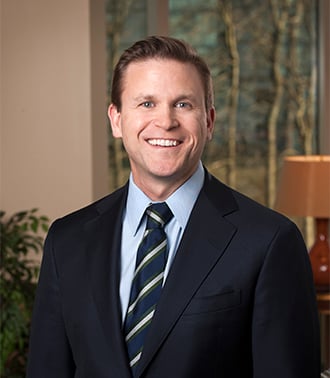U.S. Supreme Court Limits Civil Liability for Pure Omissions
On Friday, April 12, 2024, a unanimous U.S. Supreme Court ruled in Macquarie Infrastructure Corporation v. Moab Partners, L.P., 601 U.S. ___ (2024), that a “pure omission” based on a failure to disclose information required by Item 303 of Regulation S-K (Item 303) in periodic filings with the U.S. Securities & Exchange Commission (SEC), is not actionable under Section 10(b) of the Securities Exchange Act of 1934 (Exchange Act) and Rule 10b-5(b). The Court’s ruling made clear, however, that “half-truths” — omissions that render affirmative statements misleading — remain actionable.
Justice Sonia Sotomayor’s opinion explains the difference between “pure omissions” and half-truths. Pure omissions occur when “a speaker says nothing, in circumstances that do not give any special significance to that silence.” Justice Sotomayor gave the example that if a company fails entirely to file the “Management’s Discussion and Analysis of Financial Conditions and Results of Operation” (MD&A) portion of its financial statements, the omission of MD&A information required by Item 303 has no special significance because no other information was disclosed. Half-truths, on the other hand, are “representations that state the truth only so far as it goes, while omitting critical qualifying information.”1 Justice Sotomayor colorfully illustrated this distinction as the “difference between a child not telling his parents he ate a whole cake and telling them he had dessert.”2
The Macquarie decision resolves a circuit split between the Second Circuit Court of Appeals, which has permitted a private right of action under Section 10(b) and Rule 10b-5(b) based on pure omissions in Item 303 disclosures, and the Third and Ninth Circuits, which have not.3 In that sense, the decision provides some clarity for litigants across the federal circuits and narrows the path for plaintiffs to pursue omissions-based claims. Nevertheless, because pure omissions cases are relatively rare and debates will likely continue in the lower courts about what constitutes a half-truth or a pure omission, this decision likely does not represent a material shift in the federal securities laws and the scope of potential exposure for companies and individuals.
Item 303 Disclosures
Section 13(a) of the Exchange Act requires issuers to file periodic informational statements.4 These statements include the MD&A in which companies must “[f]urnish the information required by Item 303 of Regulation S-K.”5 Item 303 itself requires companies to “[d]escribe any known trends or uncertainties that have had or that are reasonably likely to have a material favorable or unfavorable impact on net sales or revenues or income from continuing operations.”6
Procedural History
In Macquarie, shareholder plaintiffs sued the company and various officer defendants, alleging, among other things, a violation of Section 10(b) and Rule 10b-5. The crux of their argument was that the company’s public statements “were false and misleading” because the company “concealed from investors that [its subsidiary’s] single largest product … was No. 6 fuel oil,” a high-sulfur fuel oil that is a byproduct of the refining process, that “faced a near-cataclysmic ban on the bulk of its worldwide use.”7 The plaintiffs alleged that the company violated its disclosure obligations under Item 303 by failing to disclose the extent to which its subsidiary’s storage capacity was devoted to No. 6 fuel oil, violating Section 10(b) and Rule 10b-5.
The district court dismissed the complaint, concluding that the plaintiffs had not “actually plead[ed] an uncertainty that should have been disclosed” or “in what SEC filing or filings Defendants were supposed to disclose it.”8 The Second Circuit reversed, concluding that the company’s Item 303 violation alone could support plaintiff’s Section 10(b) and Rule 10b-5 claim.9
The Macquarie Court’s Opinion
The Supreme Court vacated the Second Circuit’s ruling and remanded. The Court held that “pure omissions” are not actionable under Section 10(b) and Rule 10b-5(b), and that failure to disclose information required by Item 303 is only actionable if the omission renders affirmative statements misleading, or in other words, is a half-truth.
The Court reasoned that Rule 10b-5(b) does not proscribe pure omissions. Rule 10b-5(b) makes it unlawful “[t]o make any untrue statement of a material fact or to omit to state a material fact necessary in order to make the statements made, in the light of the circumstances under which they were made, not misleading.”10 The Court observed that, “[p]ut differently, it requires disclosure of information necessary to ensure that statements already made are clear and complete (i.e., that the dessert was, in fact, a whole cake).”11
The Court further reasoned that the statutory context confirms what the plain language provides. Congress imposed liability for pure omissions under Section 11(a) of the Securities Act of 1933. Section 11(a) prohibits any registration statement that “contain[s] an untrue statement of a material fact or omit[s] to state a material fact required to be stated therein or necessary to make the statements therein not misleading.”12 There is no similar language for omissions in Section 10(b) or Rule 10b-5(b). The Court rejected efforts by plaintiff to read the words “statements made” out of Rule 10b-5(b) and to shift the focus of that rule and Section 10(b) from fraud to disclosure.
The Court also rejected arguments by plaintiff that there would be “broad immunity” any time an issuer fraudulently omits information Congress and the SEC required it to disclose, because private parties may still bring “claims based on Item 303 violations that create misleading half-truths” and the “SEC retains authority to prosecute violations of its own regulations.”13
Key Takeaways
The Macquarie decision limits liability under Section 10(b) and Rule 10b-5 for pure omissions and narrows private plaintiffs’ ability to pursue Item 303 disclosure violations. However, as the Court recognized, the decision does not affect plaintiffs’ ability to pursue pure omissions claims for failure to disclose information in a registration statement under Section 11 of the Securities Act. Many companies routinely incorporate their Exchange Act filings into their Securities Act registration statement, thus potentially exposing them (and their directors and their officers who sign the registration statement) to Section 11 liability for a “pure omission” in an incorporated Exchange Act filing. Nor does it affect the SEC’s ability to enforce its own regulations, including Item 303, under other provisions of the Exchange Act.14 Furthermore, it does not affect plaintiffs’ ability to pursue Rule 10b-5 claims based on Item 303 violations or other omissions that create misleading half-truths. Indeed, the practical effect of the Macquarie decision remains to be seen, as pure omissions theories are already “relatively uncommon” in Rule 10b-5 litigation.15
Litigants also are likely to test the Court’s efforts to distinguish half-truths from pure omissions. What if, instead of telling his parents he had dessert, the boy told his parents he had dinner, or that he wasn’t hungry, or that his day was progressing reasonably well and was on track for a strong evening? The Macquarie decision does not address all permutations of potential omissions, nor could it. As a result, there are likely to be disputes about whether a particular claim arises from a half-truth or a pure omission. As these disputes play out, those responsible for making corporate disclosures should continue to follow Item 303 (and the other disclosure requirements under the Exchange Act) and make all necessary disclosures because (1) the Court’s holding does not eliminate the SEC’s enforcement authority over Item 303 violations and (2) private plaintiffs will try to plead around Macquarie by alleging half-truths instead of omissions.
Arnold & Porter will continue to monitor and report on developments in this space, and to analyze best practices for our clients. In light of this decision, issuers would be wise to review their Item 303 disclosures and related controls to ensure that they mitigate any risk of failing to identify any affirmative statement made misleading by an Item 303 omission. If you are seeking advice in light of this decision, including how to mitigate risks, please reach out to any author of this Advisory or your regular Arnold & Porter contact.
© Arnold & Porter Kaye Scholer LLP 2024 All Rights Reserved. This Advisory is intended to be a general summary of the law and does not constitute legal advice. You should consult with counsel to determine applicable legal requirements in a specific fact situation.
-
Macquarie, 601 U.S. at ____, slip op. at 5 (quoting Universal Health Services, Inc. v. United States ex rel. Escobar, 579 U. S. 176, 188 (2016)).
-
-
Compare Stratte-McClure v. Morgan Stanley, 776 F. 3d 94, 101 (2d Cir. 2015), with In re Nvidia, 768 F. 3d 1046, 1056 (9th Cir. 2014), and Oran v. Stafford, 226 F. 3d 275, 288 (3d Cir. 2000).
-
See 15 U. S. C. §§78m(a)(1), 78l(b)(1).
-
See SEC Form 10-K; SEC Form 10-Q.
-
17 CFR §229.303(b)(2)(ii) (2022).
-
City of Riviera Beach Gen. Employees Retirement System v. Macquarie Infrastructure Corp., 18-cv-3608, 2021 WL 4084572, *6 (SDNY, Sept. 7, 2021) (internal quotation marks omitted).
-
-
Moab Partners, L.P. v. Macquarie Infrastructure Corp., No. 21-2524, 2022 WL 17815767, at *2-*3 (2d Cir. Dec. 20, 2022).
-
-
Macquarie, 601 U.S. at ____, slip op. at 5.
-
-
Macquarie, 601 U.S. at ____, slip op. at 7.
-
See, e.g., 15 U.S.C. § 78u(d).
-
In re Vivendi, S.A. Sec. Litig., 838 F.3d 223, 239 n.9 (2d Cir. 2016).







